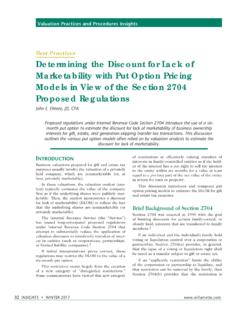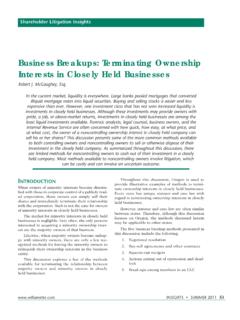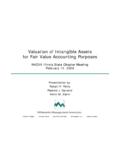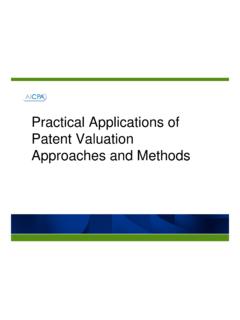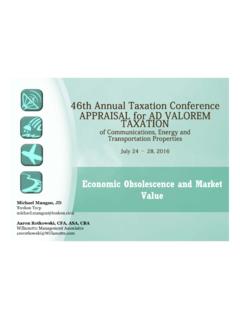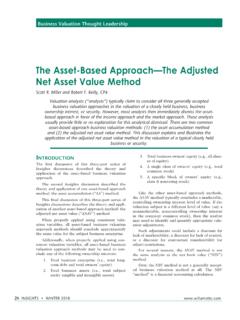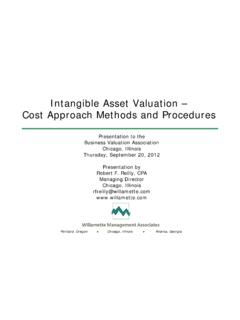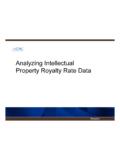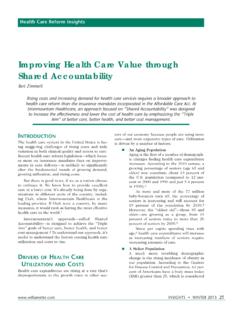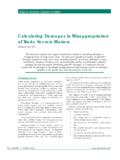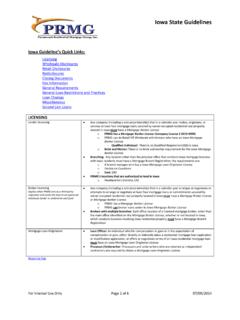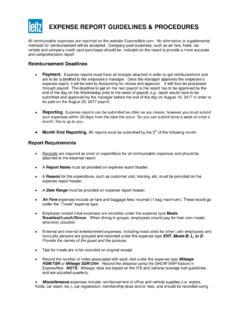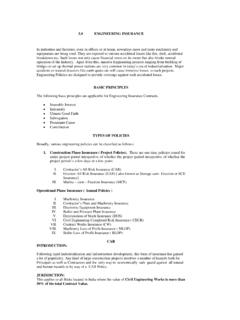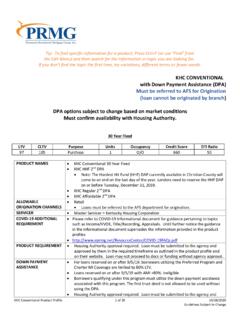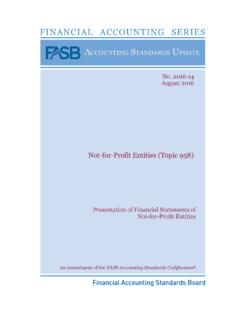Transcription of Discount Rates in a Purchase Price Allocation
1 38 INSIGHTS SUMMER 2013 www .willamette .comDiscount Rates in a Purchase Price AllocationDavid TurneyTransaction Financial Reporting InsightsThis discussion summarizes the interrelatedness of the weighted average cost of capital and the weighted average return on assets within the context of a Purchase Price Allocation for financial reporting purposes. Failure to understand this fundamental relationship can lead to inaccurate estimates of value for the acquired assets and, therefore, inaccurate reported asset values and amortization expense on the financial statements of the acquirer.
2 The WACC can be viewed as a weighted average of the required Rates of return for the individual assets of the acquired company. The selected intangible asset Rates of return should be reviewed for reasonableness through a weighted average return on assets analysis. Understanding the nature and risk of the expected cash flow (of the enterprise and specific assets) is important to ensuring consistency throughout the discussion considers the interrelatedness of the weighted average cost of capital (WACC) and the weighted average return on assets (WARA)
3 Within the context of a Purchase Price Allocation for finan-cial reporting is important for the analyst performing a pur-chase Price Allocation valuation analysis to under-stand this concept when estimating the appropriate intangible and tangible asset Rates of to understand this relationship can lead to inaccurate estimates of value for the acquired assets and, therefore, inaccurate reported asset values and amortization expense on the financial statements of the discussion provides an overview of the financial reporting Purchase Price Allocation guid-ance, income approach methods used to value businesses and intangible assets, and Discount Rates applied in the income approach 805 overvieWFinancial Accounting Standards Board (FASB) Accounting Standards Codification (ASC)
4 Topic 805 provides guidance on the accounting and report-ing that represent business combinations to be accounted for under the acquisition method. The acquirer is required to estimate the fair value of acquired assets. Using the appropriate valuation approaches and methods, the Purchase Price is allo-cated between:1. identifiable assets (including financial assets, tangible assets, and identifiable intangible assets) and2. purchased to ASC topic 805, intangible assets should be categorized by type and separated into two groups:1.
5 Those with an identifiable remaining useful life2. Those with an indefinite lifeGoodwill is not assigned a useful life, but it is tested (at least) annually for impairment. Intangible assets can be grouped into several categories, including: marketing, customer-based, artistic, tech-nology, and .willamette .com INSIGHTS SUMMER 2013 39 ASC topic 805 uses the fair value definition from ASC topic 820, which defines fair value as the Price that would be received to sell an asset or paid to transfer a liability in an orderly transaction between market participants at the measurement date.
6 Income approachThe three approaches employed in the valuation of assets include: the income approach, the market approach, and the cost approach. The focus of this discussion is on several income approach methods that are used in the business enterprise valuation and intangible asset valuation. This discussion also focuses on the measurement of the Discount rate that is applied within the income approach valua-tion income approach is a valuation method that provides an estimate of the fair value of an asset based on the cash flows that an asset (or business) can be expected to generate over its remaining use-ful Enterprise ValuationThe income approach may be applied through a discounted cash flow (DCF) method.
7 A valuation using the DCF method is based on the present value of estimated future cash flows for the expected life of the asset (or business) discounted at a rate of return that considers the relative risk of achieving that cash flow and the time value of money. The DCF method is often used in estimating the business enterprise value of the acquired the business enterprise value of the acquired company is the initial step in performing a Purchase Price Allocation . This step is performed for several reasons, including the following.
8 To validate that the Purchase Price is repre-sentative of fair value and that it was not a bargain Purchase or overpayment To validate the reasonableness of the overall business cash flow projections to be relied on in applying the income approach to value certain intangible assets To validate the reasonableness of the required Rates of return applied in the valu-ation of the intangible assets To validate that the estimated fair values of the assets are reasonable relative to the business enterprise value of the acquired companyWhen net cash flow to invested capital is used as the measure of income subject to analysis, the Discount rate applied is typically the overall cost of Asset ValuationIn the valuation of intangible assets, the income approach may be applied through the multiperiod excess earnings method (MEEM), the royalty savings method, or some other discussion describes the MEEM and the royalty savings method.
9 The valuation of identified intangible assets relies on both:1. expected cash flow that is attributable to the subject intangible assets and2. the Discount rate that is applied to that cash Excess Earnings MethodThe MEEM is a method under the income approach used to estimate the value of certain intangible assets. The starting point for the MEEM is generally financial information ( , revenue, profit margin, etc.) derived from the DCF assets often do not produce profits and cash flow without the use of other tangible and intangible assets.
10 Through the application of the MEEM the cash flows of the subject intangible asset can be isolated from the group of expected earnings of the subject intangible asset, or excess earnings, are isolated from the earnings of the group of assets by identifying and deducting portions of the total earnings that are attributable to contributory identification of earnings attributable to the contributory assets is based on the applica-tion of a contributory asset charges (CAC), which represent an economic charge for the use of the contributory assets.
